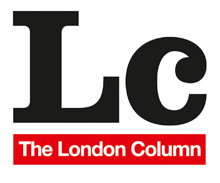A Winter Solstice offering.
Posted: December 14, 2012 Filed under: Anniversaries, Ceremonial, Wildlife | Tags: A Ghost Story for Christmas, M.R. James, Paganism, Wicca, Witchcraft, Yule log Comments Off on A Winter Solstice offering. Pig’s head still life, south London, circa 1982. © David Secombe.
Pig’s head still life, south London, circa 1982. © David Secombe.
From the Hern’s Tribe website:
Mid-Winter Solstice (Yule): Outdoor Ritual in London
A special ritual to mark the end of one Mayan cycle and beginning of another. Join us for the Journey of the Fool, and quest through the 4 Elements to consecrate a magical Talisman. Anoint the Yule-log (yes a real one) with your wishes & hopes for 2013, and place it in the ritual fire. Then feast with home made bread, mulled Wine, some woodland tribal cooking. Don’t forget the Mistletoe! There will be Wiccan elements to this ritual.
Date: Saturday 22nd December 2012. Venue: Coombe Lane (From East Croydon station, take the `New Addington’ branch of the Tram, and get down at `Coombe Lane’ stop).
From Witchology, the history of Wicca and Witchcraft by Dr. Leo Ruickibie:
Yule celebrations in Wicca date back to the late 1950s. Most Yule rituals will involve the casting of a circle, a ritual symbolising the rebirth of the solar deity, dancing round the circle and the feasting ceremony of ‘cakes and wine’. Other Wiccan covens might base their ritual on the passing of power from the Holly King to the Oak King – a concept derived from British folklore. The festival itself is entirely Pagan in origin. Echoes of old Druidic fertility rites survive in ‘kissing under the mistletoe’. Santa Claus has been Christianized as Saint Nicholas, but the tradition of a gift-bearing man arriving at mid-winter can be traced back to Wotan (Odin) in Germanic folklore.
Feasting is a large part of all Pagan traditions and at Christmas this is still a principle element. The focus of the meal around a specific animal is certainly a residue of animal sacrifice, although the popularity for turkey is a modern development. We should not be squeamish about animal sacrifice, it simply meant butchering an animal for the benefit of the community with a small and usually inedible portion being ‘given’ to the gods. Modern sensibilities are usually too cosseted to even contemplate killing a chicken, so we should not condemn the past on our own rather feeble standards.
David Secombe:
I would like to reassure my readers that the pig in the photo above was not the by-product of any crazed sacrifice, Wiccan or otherwise: it was prosaically acquired from a local butcher for the alleged purpose of making brawn, which was a fatuous attempt to disguise an equally fatuous artistic project. It was the early 1980s and I was an ambitious photographic student, my hunger for success exceeded only by the depth of my cluelessness. This porcine still life was shot on a cold December night in the back garden of my parents’ house in suburban south London, and was a study for – well, I wasn’t quite sure. It seemed like a good idea at the time … The transparency laid undisturbed for decades until it turned up in a cache of forgotten transparencies I found last month. I offer it here as a seasonal offering in a more-than-averagely bleak midwinter; we’ve still got a week to go before the solstice on the 21st, and if the Hern’s Tribe lot are anything to go by, the south London suburbs are going to be where it’s at if paganism is your thing. As for me, I’ll be indoors, watching an old Ghost Story for Christmas on YouTube. Or perhaps this … (and I’m sure you’ll forgive the shameless plug).
… for The London Column.

